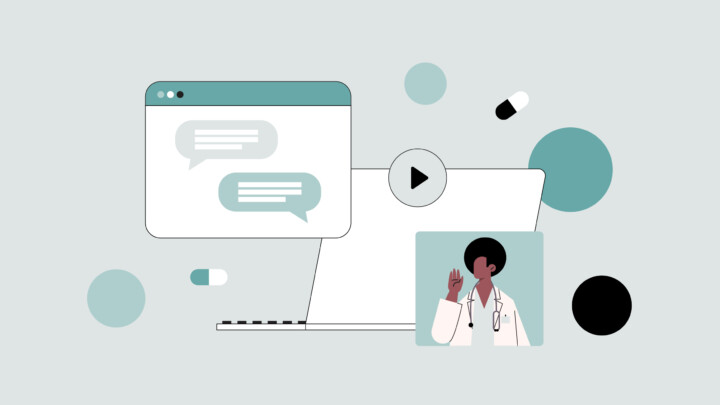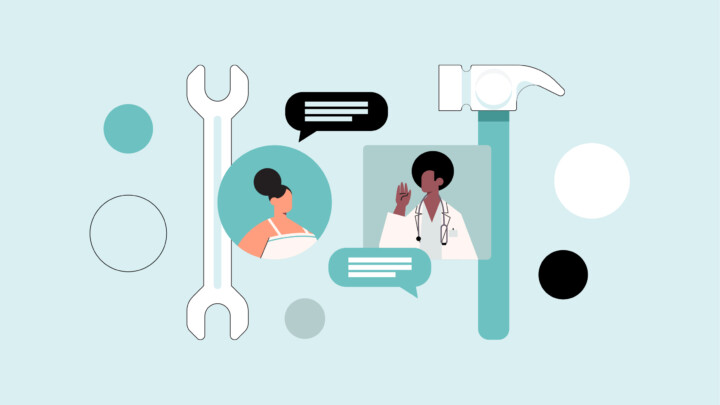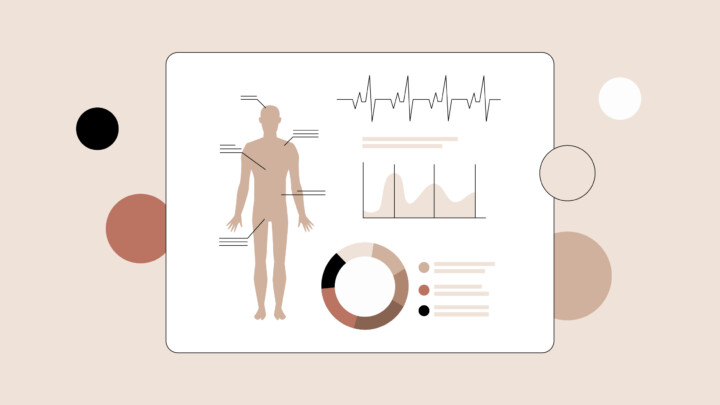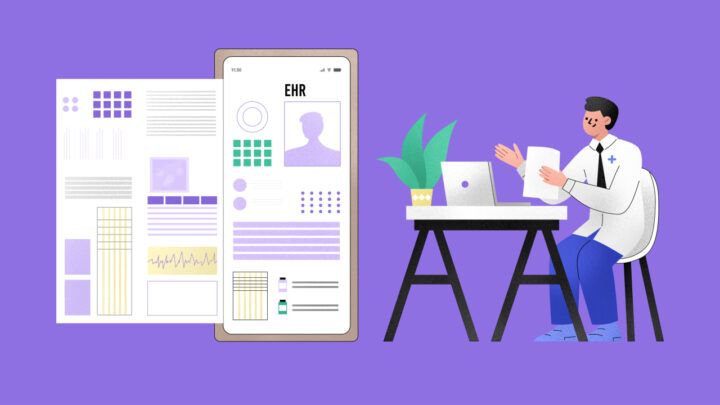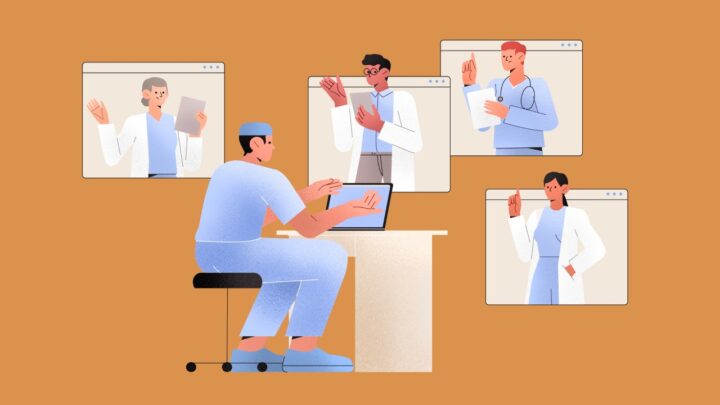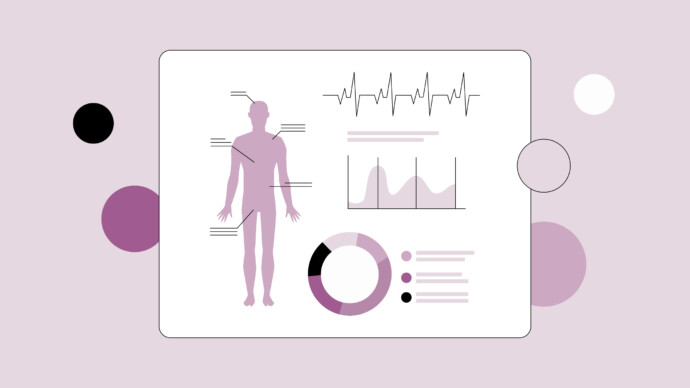
Electronic health records (EHRs) have transformed the way physicians care for patients, providing tools to track outcomes, collaborate with colleagues, and reduce errors. According to a Sermo poll of over 1500 doctors, 65% believe the use of EHRs lead to improved patient outcomes.
Still, choosing the right system can be daunting. Poorly designed tools increase screen time, disrupt workflows, and lead to burnout.
One ophthalmologist on Sermo has a low opinion: “We have truly created a modern day Frankenstein with the majority of physicians shackled to a desktop, laptop or ipad trying to use systems that cannot do what we do as doctors. The current state of EMR (electronic medical records) or EHR (electronic health records) is woefully inadequate. It makes the notes look better, improves legibility, places a great deal of unnecessary information into the medical record and meets government and insurance company mandates. That being said, I think there is great potential for this to be a useful tool for docs, but we need to tell IT what we need, not the converse. I use several different EMR’s and I would give them a “C” rating at best. They are cumbersome, tempermental and time consuming.ˮ
Contrarily, other surveyed physicians on Sermo identified that EHR systems had helped them in several ways:
- 37% benefitted from having all patient information available in one place
- 23% identified conflicts in medication that had been prescribed
- 20% were able to utilize important information while the patient was unconscious
- 17% helped establish a correct diagnosis based on the patient history in the EHR
So, what makes an EHR truly effective? Read on to discover what features to look for and how different tools perform to improve efficiency and care quality across practices of all sizes.
6 Key features of a great EHR system
Not all EHR systems are created equal. Picking the right one means looking for tools that enhance outcomes and simplify workflows for your specialty. The best EHRs include these six critical features:
Patient record management
Central to any EHR is the ability to store each patient’s clinical data in one easy-to-access place. “Access to the patient’s history, both in clinical history and analysis results, is very useful to give an appropriate follow-up and what better way than to use technology” shares a GP on Sermo. Beyond medical history, demographic and prescription details are centralized, enabling smoother transitions of care. Comprehensive patient portals even allow patients to see their records, schedule appointments, and communicate directly with providers.
Workflow automation
A good EHR streamlines repetitive tasks with automation. These systems can electronically transmit prescriptions, notify prescribers of interactions, remind patients about appointments, and integrate immunization schedules seamlessly. Automation not only saves time but can reduce the chance of errors. An oral surgeon on Sermo speaks to this, “All scripts are in one place with the ability to write Rx from the software. It is legible, without regard to who entered the data.”
Improved communication
EHR systems with built-in messaging tools allow providers to communicate easily with other specialists and patients. They also enable seamless health information exchange (HIE), reducing the risk of errors caused by misinterpretations or delays in data transfer. Strong communication features are especially vital when coordinating care for patients with chronic conditions.
Data analysis and reporting
Large hospitals and research institutions can use EHR systems to analyze trends across patient populations. These tools transform raw data into actionable insights, presented in charts and reports for easy interpretation. This is especially useful for studying treatment outcomes, improving care plans, and progressing research.
Remote patient monitoring
The use of wearables to monitor patients is growing. This and other means of remote patient monitoring, such as smart glucose meters, are supported by the best EHRs, which automatically collect the data from remote devices and add it to the patient’s chart. Integrating data from these devices into EHRs allows providers and patients to track chronic conditions collaboratively. For example, diabetic patients can visualize how their behaviors impact blood sugar levels over time, and physicians can see historically accurate trends ahead of the patient’s next consultation.
Interoperability
A common misconception is the difference between electronic medical records (EMR) and EHR. The key difference is interoperability. EMR is designed to work within a hospital or clinic. EHR is designed to work across all providers a patient might be seeing. When done properly, information is seamlessly transferred in an HIPAA-compliant manner, ensuring physicians have access to real-time, comprehensive information. Ideally, a good EHR eliminates the silos between clinics, pharmacies, patients and labs.

Top EHR tools for practices of all sizes
In addition to the considerations above, doctors should take into account their specific patient needs, practice size and budget. Discussed below are some of the most popular EHR tools for physicians:
Epic
Epic is the leading industry giant, especially among large institutions. Epic is the industry giant, especially among large institutions. With specialized modules like Epic ASAP (emergency medicine) and Epic Stork (obstetrics), it’s known for robust customizability. Its Care Everywhere feature ensures smooth data transfers between facilities.
A cardiologist on Sermo spoke to their experience with it: “With EPIC Care Everywhere [I’m] able to access records from recent visit at another facility with recent tests and evaluations…Helps those providers who actually review past medical history in detail and clarifies many items as most patients are not educated about their medical issues or know accurate results of their tests.”
The system is designed to enforce best practices, however some doctors find it hard to configure due to the extensive features available. It’s typically used by larger healthcare systems who need key features such as customisability and can afford the higher cost.
Athena Health
Athena Health is another highly complex system with many features that are typically more suited to medium and large practices.
Known for its cloud-based system and AI-powered tools, AthenaOne automates documentation, prior authorizations, and even claim follow-ups. It excels in simplifying billing, making it ideal for large practices needing robust integrations.
Oracle Health (Cerner)
Formerly known as Cerner Ambulatory EHR, Oracle Health is designed to support practices of all sizes and has customizable workflows for over 50 different specialties. It is designed to be easy-to-use, including a highly user-friendly mobile patient portal.
It is the most widely used EHR system nationally, which makes transfers easier, and allows for a lot of customization. However, implementation can be a lengthy process and physicians may be faced with a learning curve.
eClinicalWorks
This system integrates EHR with practice management components, and supports over 40 specialties and sub-specialties with one database. It accommodates remote monitoring through a program called Healow Hub, and AI-driven information sharing- offering a seamless patient-centric experience. eClinialWorks additionally offers AI scribe software, further reducing administrative load on physicians who choose to use this system.
NextGen Healthcare
NextGen is an EHR system built for ambulatory and specialty practices of all sizes. It offers strong interoperability, customizable patient communication tools, and robust analytics for population health and risk management. Its integrated financial solutions, including full revenue cycle management, make it a solid choice for mid-sized practices seeking compatibility with third-party software.
Practice Fusion
Practice Fusion focuses on creating integrative environments. This means it includes a high-quality patient portal, an online check-in feature to complete forms ahead of time and automatically integrate patient responses into their notes, and imaging and scanning integration.
This is an easy-to-implement, affordable option for smaller practices looking for features like lab result integrations and federal compliance support (e.g., Merit-based Incentive Payment System (MIPS) reporting).
Veradigm (previously AllScripts)
Veradigm offers affordable, web-based EHR tools ideal for small to mid-sized practices. It features secure ePrescribing, scheduling, and billing, with strong integration across labs and imaging services. While fully HIPAA compliant and flexible due to its open architecture, some users report excessive clicks for routine tasks.
AdvancedMD
AdvancedEHR by AdvancedMD is a modular, role-based EHR platform with full functionality on iOS. Its tiered, à la carte pricing allows customization based on practice needs. It integrates well with revenue cycle management and is suited for practices seeking flexibility and mobile access.
MEDITECH Expanse
MEDITECH Expanse is a mobile-friendly, cloud-based EHR designed for proactive and precision care. It includes predictive analytics, genomics support, and tailored interfaces for both physicians and nurses, making it ideal for clinicians working across devices.
SimplePractice
SimplePractice is an intuitive EHR built for solo and small mental health practices. It’s easy to set up, offers patient engagement tools like appointment reminders, and supports practice marketing. However, pricing may increase with additional clinicians, making it less scalable for larger teams.

7 Common EHR challenges for doctors
Even the best EHR systems come with hurdles. Here’s what physicians struggle with most::
Excessive screen time
Many physicians feel tethered to their devices, often with little time to rest between patients. In fact, 70% of physicians on Sermo reported experiencing screen-related fatigue. In a busy practice, it can be hard to take a proper break, and a frustrating EHR system can exacerbate feelings of burnout.
An otolaryngologist opined, “EMR is an unjustifiable drain on doctor’s time. I was trained to be a clinician, not a data entry technician. The “physician shortage” is a direct result of the need to document everything on a computer screen. We need better and more user-friendly interfaces!”
Poor user interface
Outdated designs and inefficient workflows can frustrate physicians, especially when routine tasks require excessive clicks. Older user interfaces may also not work as well on mobile devices.
As one GP on Sermo puts it, “While EHR has the potential of being objectively superior to paper records, many issues must be fixed in order to make the task as efficient as paper. I’d say the chief complaint with EHR is the redundancy and duplicity of the process. While paper records are straightforward, badly-designed EHR systems will spread different processes in wholly different screens, will require the same information to be input twice”.
Poor interoperability
In theory, EHR should allow patient records to be transferred to any provider. In practice, these systems don’t always communicate efficiently, resulting in the need to manually transfer information. Several physicians on Sermo have expressed the desire for a universal system to better share and connect EHR records across providers.
“The idea of EHR was amazing but the lack of government coordination has resulted in a hodge/podge of multiple EHR that don’t communicate with one another. The time needed to manage EHR detracts from time with patient. It is a shame that we have not developed a universal EHR for USA!ˮ explains to a urologist on Sermo. Another physician adds, “I still believe to make it fully useful we need a universal EHR where I can see records from any provider my patient sees.”
Workflow disruption
When a physician needs to constantly pause to enter data into the EHR, this can disrupt their workflow. Some newer systems are adding voice operation or AI-assisted tools to reduce this risk, but the need to take attention away from the patient in order to complete data entry can have significant affects on the patient experience. A general surgeon on Sermo sums up the issue, “EMRs have seriously jeopardized the doctor-patient relationship. When physicians are preoccupied with completing the EMR- they fail to look carefully at the patient, sitting there…I believe that EMRs have not only damaged but eviscerated the Doctor-Patient [relationship] and much of the respect that was part [of] that special bond. Unless one learns to observe carefully and listen attentively, while typing, much of the quality and joy of our profession is lost.”
Downtime of the system is also a concern, as the patient’s records cannot be updated when connectivity is lost. According to one psychiatrist on Sermo, “The experts stressed the need for redundant equipment and connectivity; disaster recovery plans and downtime procedures; appropriate system security; appropriate system monitoring to detect failures or misuse; and backup solutions such as standalone computers and paper documentation. These above parameters would provide [a] contingency plan to avoid and manage EHR failures.ˮ
High training burden
Some EHR systems can be complicated, and physicians may need to spend weeks, or even months, learning how to master them. This high training burden particularly impacts larger hospitals who need enterprise features that are typically more complex. Physicians should be careful to choose an EHR system with good documentation and training support.
Frequent bugs and updates
Like all software systems, EHR solutions can experience bugs and often need to be updated frequently, potentially interrupting workflow. A neurologist on Sermo complains that “Every time they update to fix one bug, the update ends up creating two more. Doesn’t help that our desktops are ancient.”
Too focused on billing
Many EHR systems are focused on billing and insurance mandates, integrating revenue management and even collections, rather than features that support patient care. While these may support the bottom line, they can come at a cost. “EHRs are designed for billing, not for physicians. We have become data-entry clerks.” says a dermatologist.
Conclusion
As an OB/GYN on Sermo puts it simply, “It definitely has its benefits and drawbacks”.
Despite frustrations, 58% of physicians still find EHRs useful and report a positive effect on work-life balance.The best EHR tool depends on the size and type of your practice, whether it is an enterprise-level solution such as Epic or a small practice-oriented platform such as SimplePractice.
Good EHR tools prioritize usability, but even the best tools can be hard to implement, generate user fatigue, and require training. When selecting an EHR tool, consider:
- Data migration ease
Will it be straightforward to transfer records from your current system to the new EHR? - Budget and practice requirements
Does the platform fit your financial constraints and align with your practice size, specialty, and workflow? - AI and automation compatibility
Are you comfortable using EHRs with AI features for tasks like data capture, clinical documentation, or scheduling? - Training time and support
How much time can you realistically dedicate to onboarding and training? Does the vendor offer adequate support?
Choosing the best EHR tool for your needs is a challenge for any physician. Sermo can help. With over a million verified members, the Sermo physician community provides authentic feedback from doctors who use these systems daily, providing trusted insight rather than vendor-driven reviews. Join Sermo today to take advantage of insights and real-world experiences from your peers.
